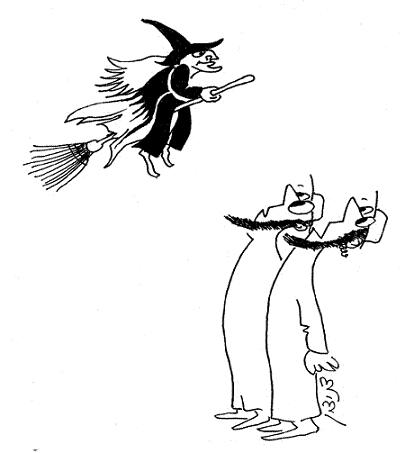
The early sages (the Tanaaim) said: a woman who acts like a righteous person and who prays causes the destruction of the world. Thus, for example, an unmarried woman who prays or a widow who customarily visits her neighbors leads to the disintegration of conservative society; they show themselves to be righteous but are actually licentious and practice witchcraft. The scholars asked: Did not a sage, Rabbi Yochanan, relate an incident in which he learned fear of the Heavens from an unmarried girl who prayed? He heard her whispering her prayer: Master of the universe, You created heaven and you created hell, you created the righteous and you created the evil. May it be Your will that no man come to sin through me [by desiring her sexually]. This implies that unmarried woman who pray are truly righteous women from whom one can learn fear of sin. Rabbi Yochanan also told of a widow who came to pray in his synagogue, far from her home, though there were closer synagogues. Rabbi Yochanan asked her why she walked so far to pray, and the widow answered that this way she earned reward for the traveling and reward for the walking. This implies that there are righteous widows. Answer: The early sages, who claimed that unmarried women and widows who pray cause deception and destruction of modesty did not refer to all unmarried women and widows who pray, only specific, known women like the widow called Yochni the daughter of Ritivi. This widow was a witch who fooled her pregnant neighbors into thinking she was righteous. When it was time for the neighbors to give birth, during labor, she would stop the progress of the labor through witchcraft. As the labor pains continued, she would act righteous and say: I will go and ask G-d’s mercy on you; perhaps my prayers will be answered. Instead of going to pray she would go and undo the sorcery which had stopped the progress of the labor, and labor would continue until the baby was born. Thus, people thought this witch to be a righteous woman, for they thought her prayers were answered. How did they discover that this “righteous woman” was in fact a witch who was fooling the public? Once, when she had a workman in her house, she went to see a laboring woman. The workman, who was left in the house, heard the sound of her familiars rattling around inside a jug; They sounded like the cry of a fetus rattling around in its mother’s womb. The workman opened the jug and the familiars emerged. The infant was immediately born, and thus they knew that she was a witch and not a righteous woman whose prayers had been answered.
(Babylonian Talmud, Tractate Sotah 22a)
